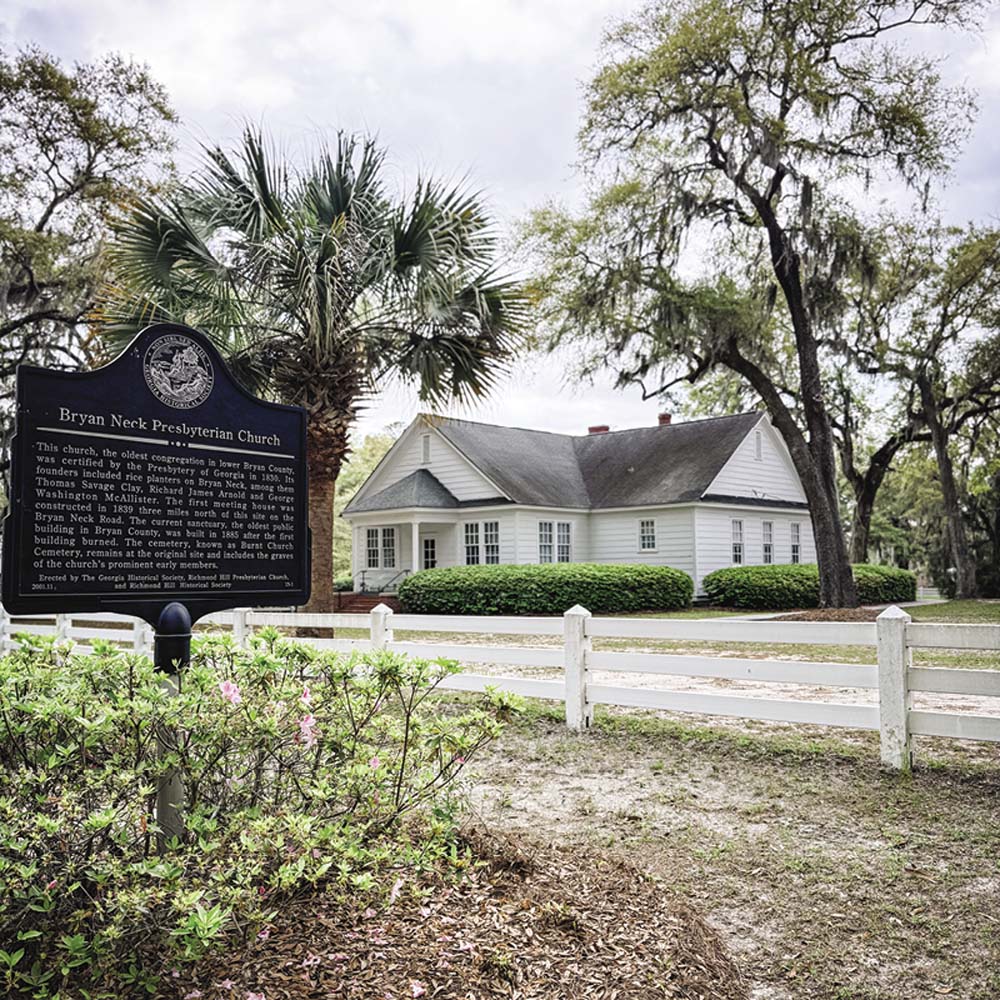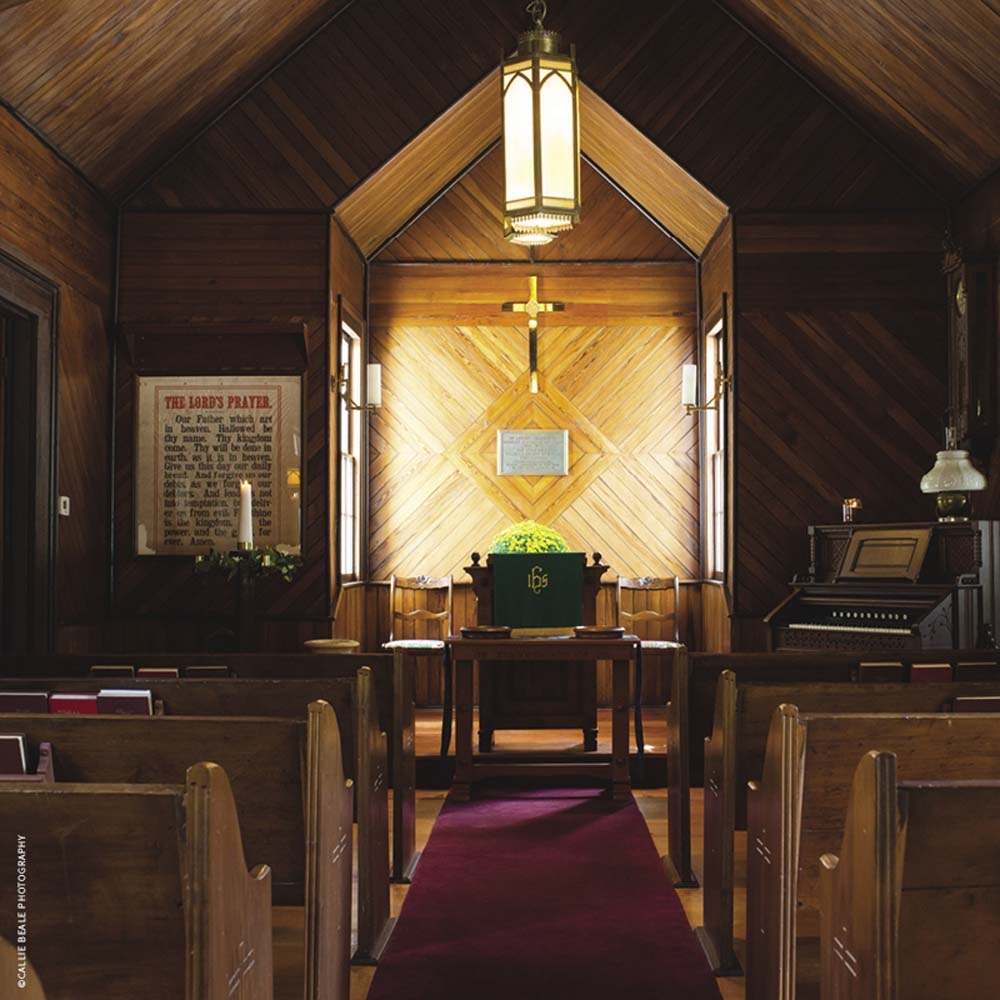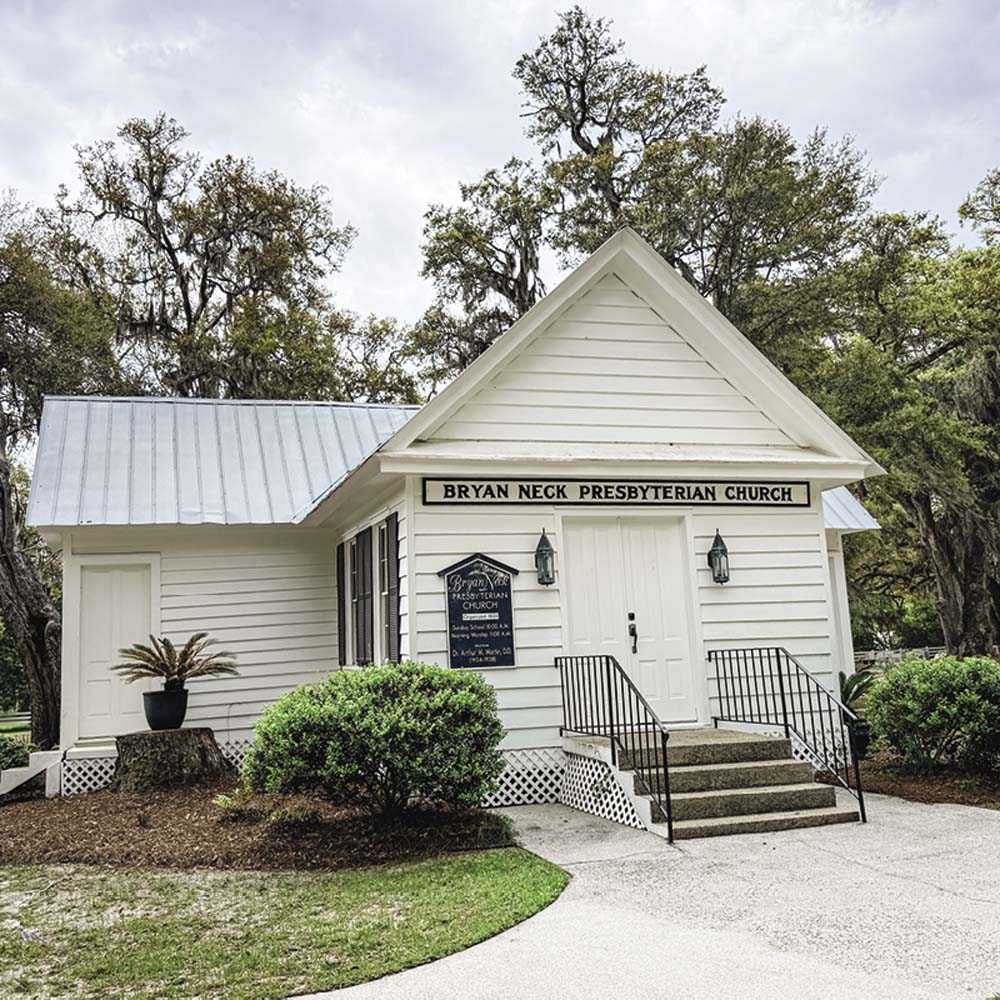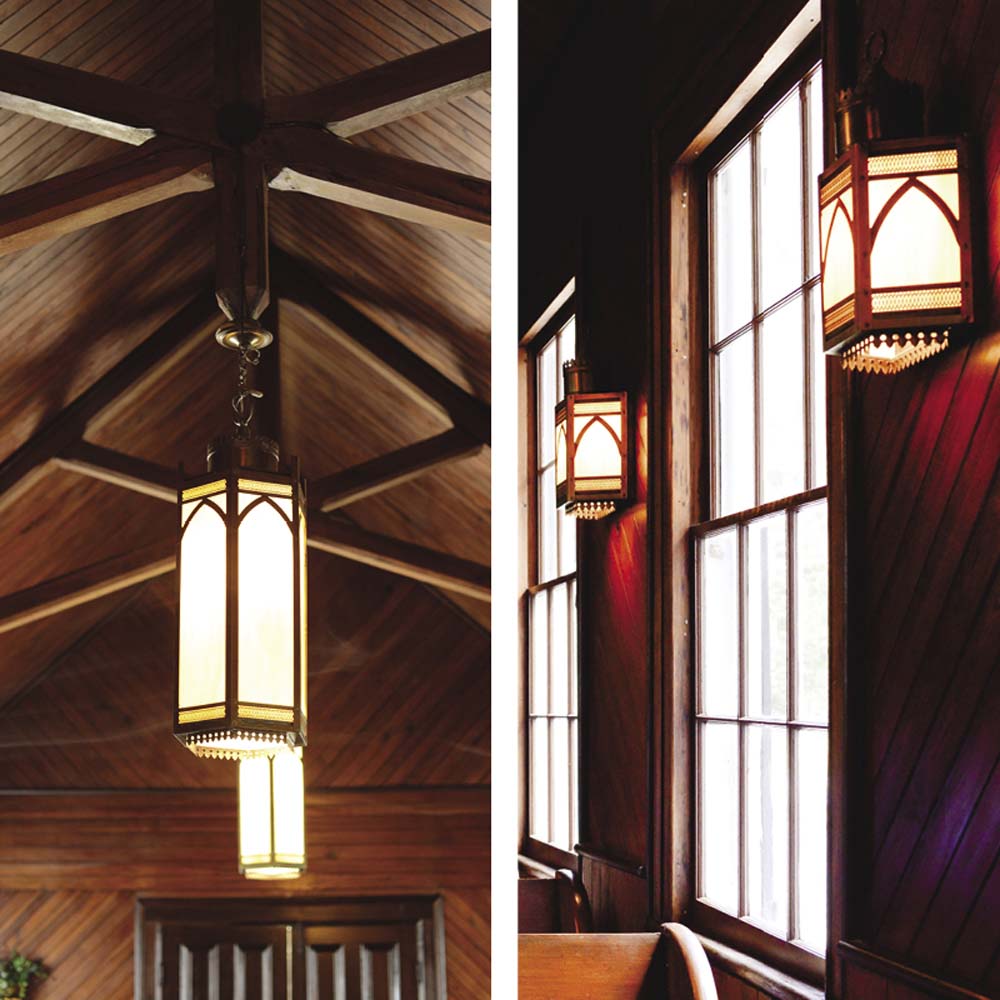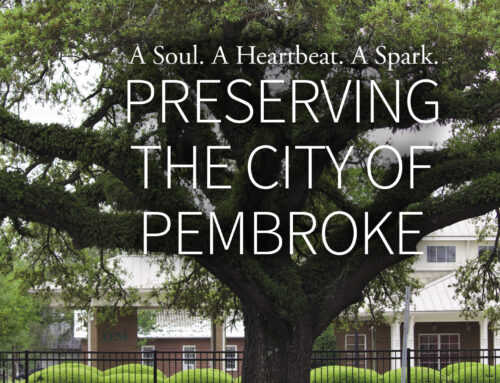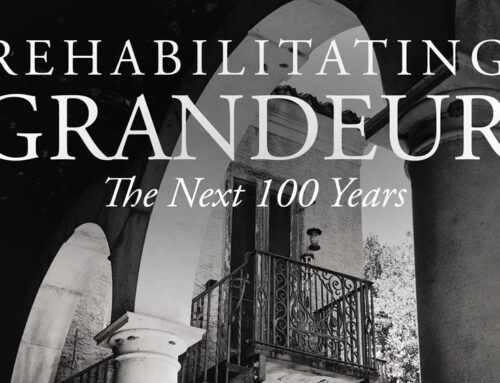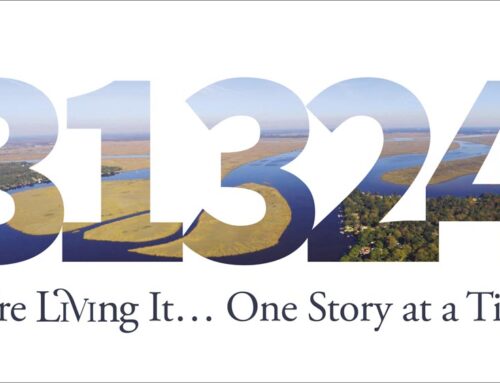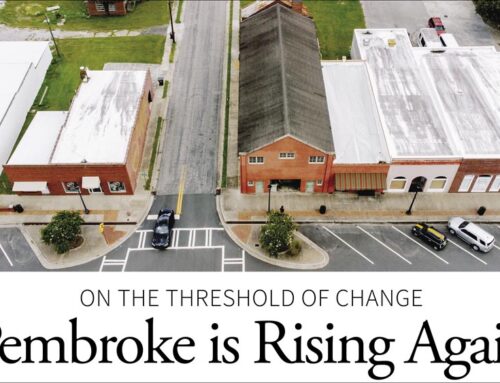
Saving Sacred Ground
WORDS BY Paige Glazer
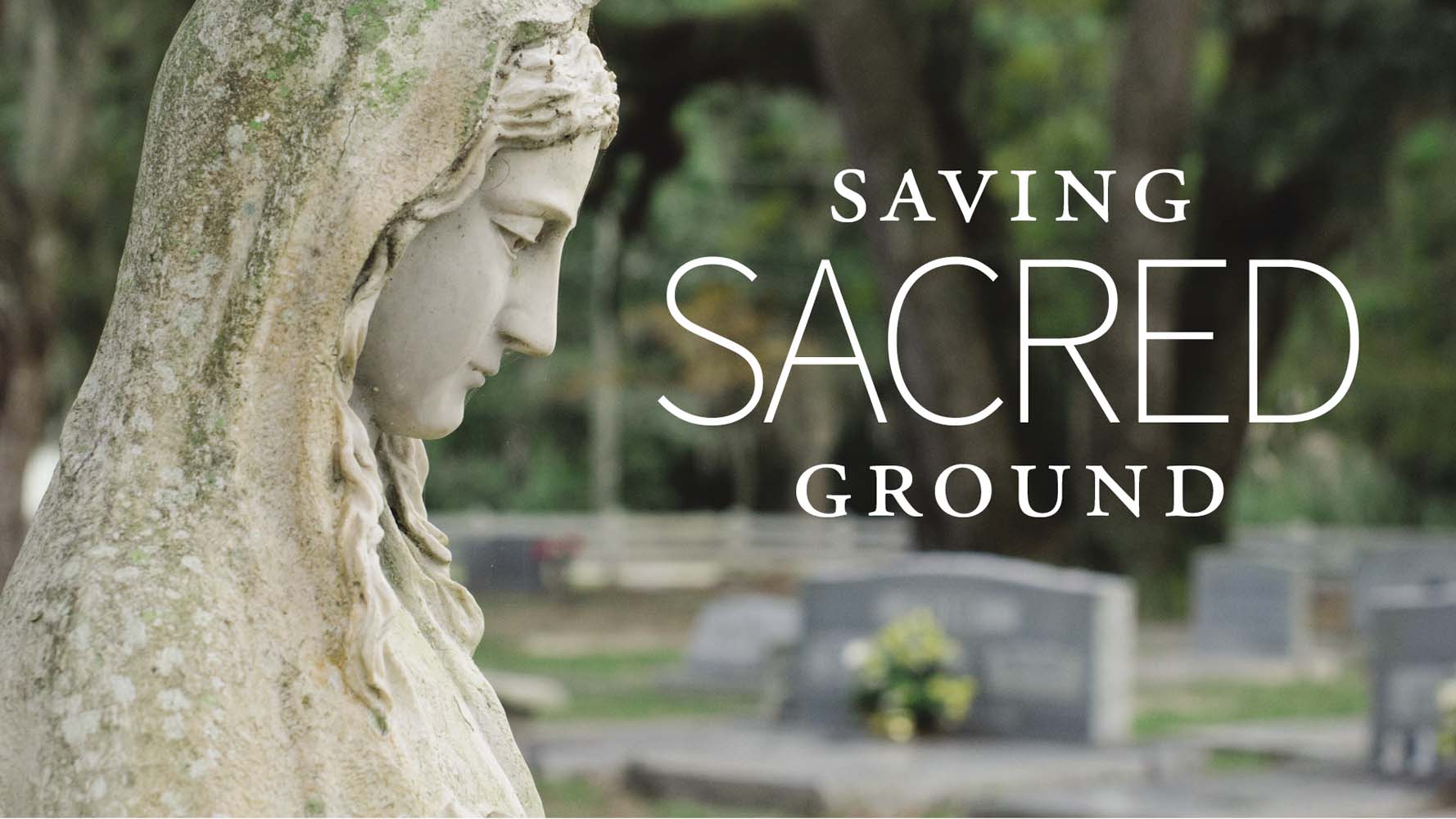
Tucked beneath a canopy of ancient live oaks in the small, unincorporated community of Keller, Georgia, Bryan Neck Presbyterian Church quietly watches over the land it has graced for nearly 140 years. With its timeworn white exterior and candle-scorched wooden ceiling, the chapel is more than a historic landmark—it is a story still unfolding. And in 2024, that story found a new chapter in the hands of a local man named Robbie Ward.
Robbie purchased the church and adjacent manse in 2024, recognizing the urgency to act before it was lost—not to nature or neglect, but to time. The devoted caretakers who had long watched over it, including sisters Rosie Donnelly and Betsy Wilson, were aging. Their families had poured their lives into preserving the property for decades, with deep personal ties to the chapel, the manse, and the cemetery where their ancestors now rest. But even the most passionate stewards cannot carry the weight forever. And while the Presbyterian diocese had supported the site as long as possible, it eventually became clear that maintaining the property was beyond the church’s financial capacity. It needed a new chapter, a new protector.
That’s when Robbie stepped in.
“I didn’t want to see all their work—the generations of people who kept this place going—just fade out,” he says. “It wasn’t about neglect. It was about time catching up.”
Over the last nine months, Robbie has worked tirelessly to refresh and reinforce the restoration efforts that came before him—not to modernize the space, but to protect it. His work is driven by reverence, not renovation. More than a historic site, he sees Bryan Neck as a living symbol of community memory, of shared heritage, and of quiet resilience.
The roots of Bryan Neck Presbyterian Church stretch all the way back to 1830, when the Presbytery of Georgia approved its establishment near Hardwicke. A group of prominent rice planters—John J. Maxwell, Thomas Savage Clay, Richard James Arnold, Edward Footman, and George Washington McAllister—served as the church’s first trustees. In 1841, a wooden-frame church with two entrances, a belfry, and a gallery for enslaved persons was built between Clay’s Tivoli plantation and Harden’s Buckland Hall (you can see the footprint at Burnt Church Cemetery). That structure was tragically destroyed by fire in 1882, and the congregation chose to rebuild farther east, in Keller. The new chapel was completed in 1885, where it remains today.
The beauty of the church’s exterior is matched only by the breathtaking craftsmanship found inside. The original tongue-and-groove wood walls add warmth and depth to the small sanctuary. Candle burn marks still stain the ceiling, reminders of the days when the only light came from flames. And in the preacher’s stand, an old family Bible rests quietly—a powerful symbol of the faith that built this place and the people who sustained it.
The manse next door was added in 1939, thanks to none other than automobile industrialist Henry Ford. By that time, Ford had developed a deep affection for Bryan County and would quietly purchase more than 85,000 acres of land in the area. Seeing the value of the church to the community, he offered to build the manse in exchange for a piece of church property. Constructed in Ford’s signature architectural style—simple frame construction, white painted exterior, and an asphalt shingle roof—the 2,200-square-foot manse became both a home for ministers and a hub for local life. Over the years, it hosted everything from youth groups and weddings to cooking classes and Cotillion. Its original features—wooden cabinets, built-ins, wood floors, and porch railings—still remain, a rare preservation of 1930s craftsmanship.
By the early 1990s, the congregation had outgrown the chapel and relocated to a larger church building on Highway 144. Bryan Neck was used only occasionally after that, and by the early 2000s, the toll of time began to show. That’s when longtime members Rosie Donnelly and Betsy Wilson stepped in to rally support. “When our mother passed away in 2005, she wanted her funeral to be held here,” Rosie once said in an earlier article written for Reflections by Christy Sherman. “The church was in deplorable condition.” The sisters sprang into action, just like their parents had during the Ford era, donating time, money, and passion to preserve what they could. Even Rosie’s grandson, David Beasley, chose the church as his Eagle Scout project—repairing the exterior in 2010 before the chapel’s 125th anniversary.
But despite those deeply rooted efforts, the future of the church still hung in the balance—until Robbie answered the call.
Transitions like these are not uncommon in historic preservation—places lovingly passed through generations often reach a tipping point. When institutional support runs dry and aging caretakers can no longer shoulder the burden, communities are left with a choice: let go, or step in. Robbie’s decision represents a powerful example of what community-led stewardship looks like. And in his hands, Bryan Neck Presbyterian Church is being carefully, lovingly revived.
“I want this place to be loved again,” he says. “I want people to get married here, to bring their kids here, to walk through and just feel the weight of history in a good way—not heavy, but meaningful.”
His plans are simple but profound: preserve the structures, honor the stories, and invite others into the sacred rhythm of the place. Worship services, concerts, storytelling nights, and heritage events are all on the horizon. “We’re all just stewards,” Robbie says. “This place was here long before me, and God willing, it’ll be here long after. I just want to do my part in between.”
And so the beautiful littler church in Keller—once at risk of fading into silence—finds its voice again. A new chapter has begun, not by accident, but by intention. Because history, when protected by those who care, doesn’t just survive.
It endures.

